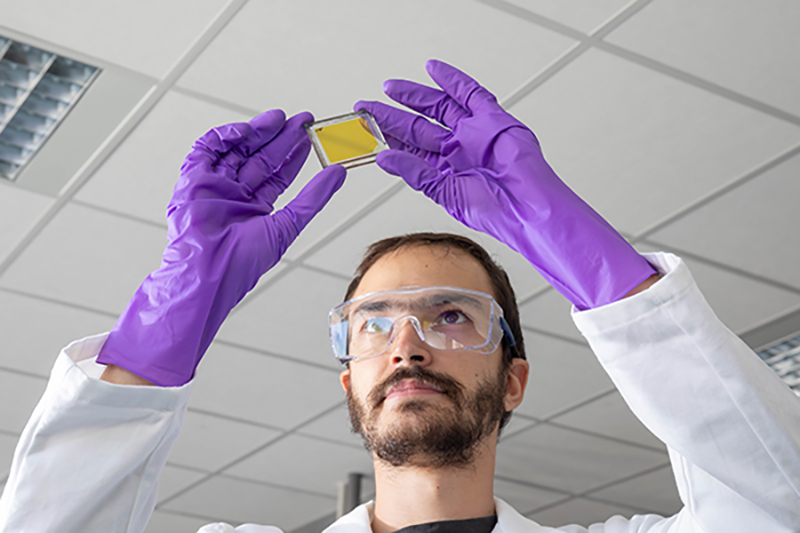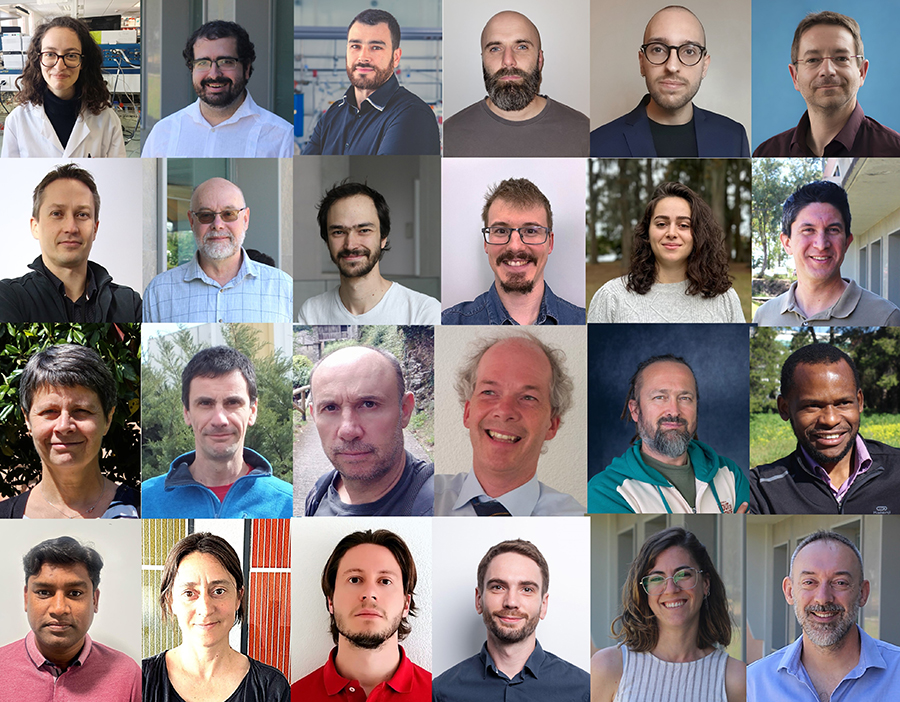In light of the climate emergency, we must reconsider how we produce and consume energy. Sustainable technologies, such as photovoltaic solar energy systems, are key to this transition towards a more environmentally friendly future. In order to be efficient, solar panels must capture as much light as possible. This presents a real challenge for applications such as windows, building façades and agricultural installations, where light must pass through while electricity is generated. Therefore, finding the right balance between transparency and energy performance is essential in developing solutions for these new applications.
A team at
CEA-Irig (SyMMES/STEP), led by Renaud Demadrille, has developed innovative photochromic dyes for use in so-called dye-sensitized solar cells (DSSCs). These dyes enable the creation of solar cells with variable transparency. These molecules change colour in response to light: they remain transparent in low light conditions and darken automatically in bright sunlight. When integrated into solar cells, they can generate electricity and adapt their transparency independently of any external control system. The result is a multifunctional solar cell that can self-regulate to optimise energy production while allowing light to pass through when required.

Inspection of a photochromic solar cell after production © CEA-Irig/SyMMES
Thanks to molecular engineering, the team has perfected these dyes, enabling them to react more quickly to light and switch more swiftly between transparent and coloured states. They also offer better colour rendering, thereby improving visual comfort. These advances demonstrate the feasibility of combining two typically incompatible functions — colour change in response to light (photochromism) and electricity generation (photovoltaics) — within a single material. This is an important step towards developing smart windows that can adapt to light while producing energy for future buildings and infrastructure.
Renaud Demadrille and his team, which includes colleagues from Pablo de Olavide University in Spain, Solaronix in Switzerland and the Université de Picardie in France, won the
Royal Society of Chemistry's Materials Chemistry Horizon Prize 2025 in recognition of their work over the past five years.
